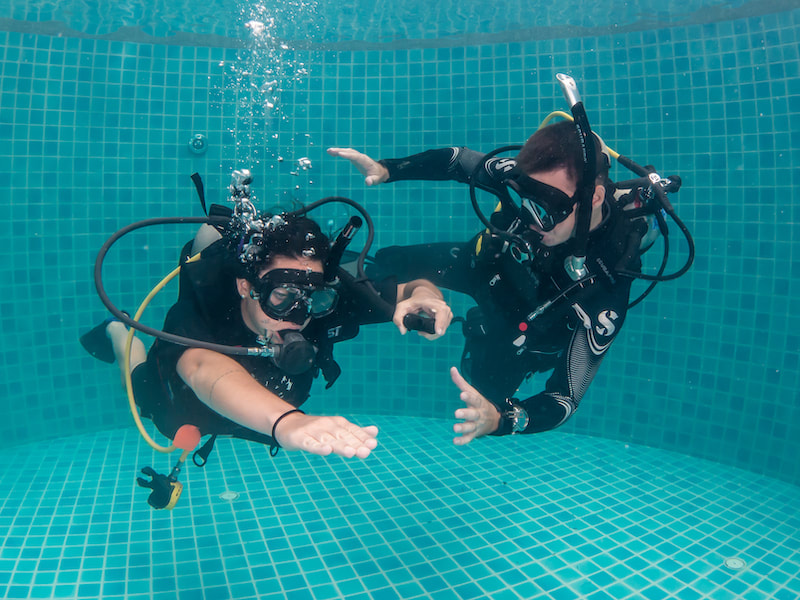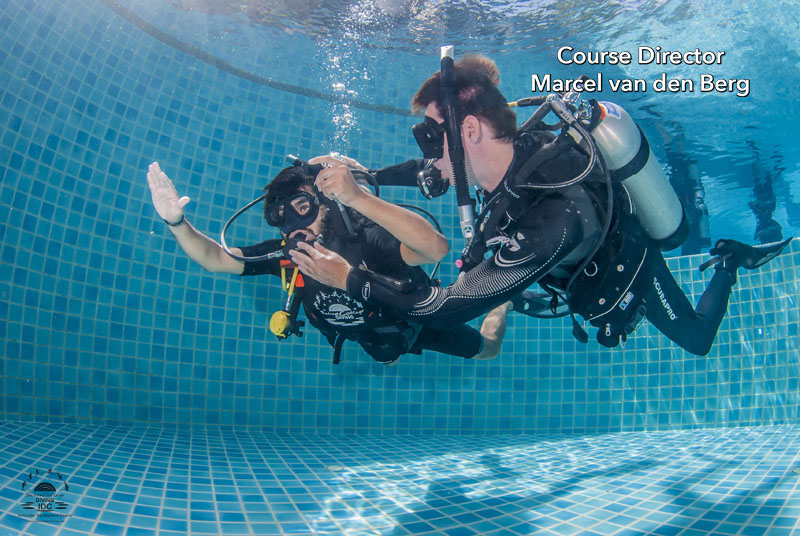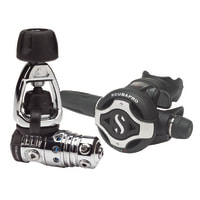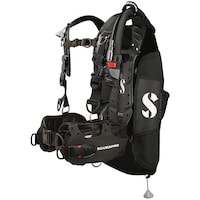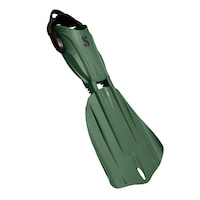PADI CESA Skill - Controlled Emergency Swimming Ascent
The PADI CESA skill in the PADI Open Water Diver Course is one of the most important scuba skills to perform correctly and safely. Many people overthink the PADI CESA Skill. Still, in the end, it can be performed easily and safely by just following a few easy steps.
Why do we practice the CESA - Controlled Emergency Swimming Ascent?
The reason why we practice the PADI CESA Skill for real life is that in the unlikely event you run out of air as a Scuba Diver and your dive buddy is too far away, you can still make a safe ascent to the surface.
When do we practice the PADI CESA Skill?
You need to complete the PADI CESA Skill twice during the PADI Open Water Diver Course. Once during Confined Water Dive 3 and as a flexible skill during Open Water Dive 2 or 3 or 4 of the PADI Open Water Course.
During Open Water Dive 2 or 3 or 4 we perform the PADI CESA vertically from 6 to 9 meters to the surface. Before we practice the PADI CESA Skill vertically in the Open Water we like to practice it first horizontally in confined water for at least 9 meters, just to be sure we are ready for the open water.
Confined open water is a swimming pool or open water site that offers swimming-pool-like conditions with respect to clarity, calmness, and depth.
During Open Water Dive 2 or 3 or 4 we perform the PADI CESA vertically from 6 to 9 meters to the surface. Before we practice the PADI CESA Skill vertically in the Open Water we like to practice it first horizontally in confined water for at least 9 meters, just to be sure we are ready for the open water.
Confined open water is a swimming pool or open water site that offers swimming-pool-like conditions with respect to clarity, calmness, and depth.
How to perform the PADI CESA Skill in Confined Water
1. Start by being neutrally buoyant, simulate the ascent position, with your right above your head and your left hand on the deflator button
2. Take a couple of deep breaths
3. Whenever you are ready, take a final breath in and start swimming slowly while exhaling continuously by making an aaaaaaaaaaah sound
4. Keep swimming slowly with-out touching the bottom or the surface
5. Keep exhaling making that continuous sound
6. Swim for at least 9 meters until the CESA is Finished
In this video, we show how to do the CESA correctly in a swimming pool during confined dive 3 of the PADI Open Water Diver Course. We show this from a perfect diving student level:
2. Take a couple of deep breaths
3. Whenever you are ready, take a final breath in and start swimming slowly while exhaling continuously by making an aaaaaaaaaaah sound
4. Keep swimming slowly with-out touching the bottom or the surface
5. Keep exhaling making that continuous sound
6. Swim for at least 9 meters until the CESA is Finished
In this video, we show how to do the CESA correctly in a swimming pool during confined dive 3 of the PADI Open Water Diver Course. We show this from a perfect diving student level:
The CESA is part of Confined Water Dive 3, and the Performance Requirement / Objective from the PADI Instructor Manual is:
Simulate a controlled emergency swimming ascent by swimming horizontally for at least 9 metres/30 feet while emitting a continuous sound.
If you are a PADI Dive Instructor and you want to teach this Skill then check out this article we wrote on How To Teach The PADI CESA - Controlled Emergency Swimming Ascent Skill.
Simulate a controlled emergency swimming ascent by swimming horizontally for at least 9 metres/30 feet while emitting a continuous sound.
If you are a PADI Dive Instructor and you want to teach this Skill then check out this article we wrote on How To Teach The PADI CESA - Controlled Emergency Swimming Ascent Skill.
Dive Equipment for the CESA
Great dive equipment to have for the PADI CESA Skill is a good scuba regulator, BCD and Fins. Have a look at the items below as they are some of the best dive gear to have:
Next Skill: Hover Orally Inflate for 1 Minute
|
|
|
|
Marcel van den Berg
PADI Platinum Course Director
PADI Platinum Course Director
SCUBA DIVING TIPS
Privacy Policy
Disclaimer
As an Amazon Associate I earn from qualifying purchases.
All content on this website and URL are owned by Sairee Cottage Diving PADI 5-Star IDC Center S-36452
Copyright 2017 - 2022 | All Rights Reserved
Disclaimer
As an Amazon Associate I earn from qualifying purchases.
All content on this website and URL are owned by Sairee Cottage Diving PADI 5-Star IDC Center S-36452
Copyright 2017 - 2022 | All Rights Reserved

